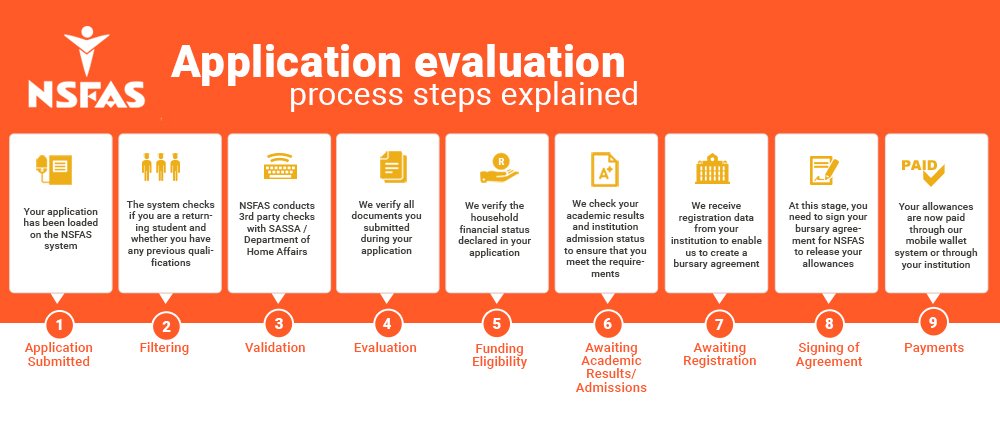
To ensure a smooth application process and keep applicants informed about the progress of their submissions, the NSFAS (National Student Financial Aid Scheme) has implemented a comprehensive application status system. This system plays a vital role in providing applicants with updates on their applications, including any outstanding requirements.
Decoding NSFAS Application Statuses
It is crucial for applicants to understand the various NSFAS application statuses and their implications. Here are the different statuses explained:
1. Application Submission
Once you submit your application online, this status confirms that your application has been successfully received by the system. It marks the initial step in the application process.
2. Application Filtering
During this stage, the system evaluates whether you are a new applicant or a returning student. It also verifies your credentials before forwarding your application to NSFAS for further processing.
3. Application Validation
At this stage, your application undergoes thorough validation. NSFAS verifies the legality of your information by cross-referencing it with the Department of Home Affairs and the South African Social Security Agency. It includes validating your name and income details.
4. Application Evaluation
To ensure the authenticity of the provided documents, NSFAS carefully evaluates each application. This step is crucial to prevent fraud or any form of misrepresentation.
5. Funding Eligibility Assessment
NSFAS assesses your financial eligibility for funding. While they offer financial aid to tertiary students, they evaluate the backgrounds of all applicants. To qualify for NSFAS funding, applicants must have a family income of at least R350,000 per year.
6. Awaiting Academic Results or Admission
NSFAS requires confirmation of your academic results and admission status before and during enrollment. They collaborate with tertiary institutions to gather applicants’ academic scores and relevant information. The NSFAS system cross-checks this data to ensure accuracy.
7. Registration Process
This stage involves the creation of agreement papers and establishing a formal relationship between NSFAS and your school. Your school must provide its details to NSFAS for an internal bursary agreement, facilitating the processing of funds.
8. Signing of the Agreement (LAF/SOP)
Every applicant must carefully review and sign their entry agreement to confirm their acceptance of NSFAS terms and conditions. This agreement binds both the applicant and their school to the funding arrangement.
9. Payment Confirmation
Once NSFAS has approved, evaluated, and cross-checked your application, they initiate the payment process. All allowances are either deposited directly into your wallet or transferred to your school for reimbursement.
Understanding NSFAS Rejection
If your NSFAS application is rejected, you will receive a notification via email or SMS. This communication will provide an explanation for the rejection and, if applicable, instructions on how to appeal the decision. Applicants can also access the myNSFAS portal to review their application status and correspondence from NSFAS.
Step-by-Step Guide to the NSFAS Application Process
The NSFAS application process comprises several stages. Here’s a breakdown of the steps involved:
- Registration and Account Creation: Begin by visiting the NSFAS website and registering to create an account.
- Application Form Completion: Fill out the application form, providing personal and academic information, along with supporting documents such as a photo ID, academic credentials, and proof of household income.
- Verification: After submitting your application, it undergoes a verification process to ensure the accuracy of the provided information.
- Evaluation: NSFAS evaluates your application based on their set criteria. Successful applicants are notified of the outcome.
The duration of the entire process can vary from a few weeks to several months, depending on the volume of applications received and processed.
Was this helpful?
61 / 28
#Bursaries #National Student Financial Aid Scheme (NSFAS) #News & Updates